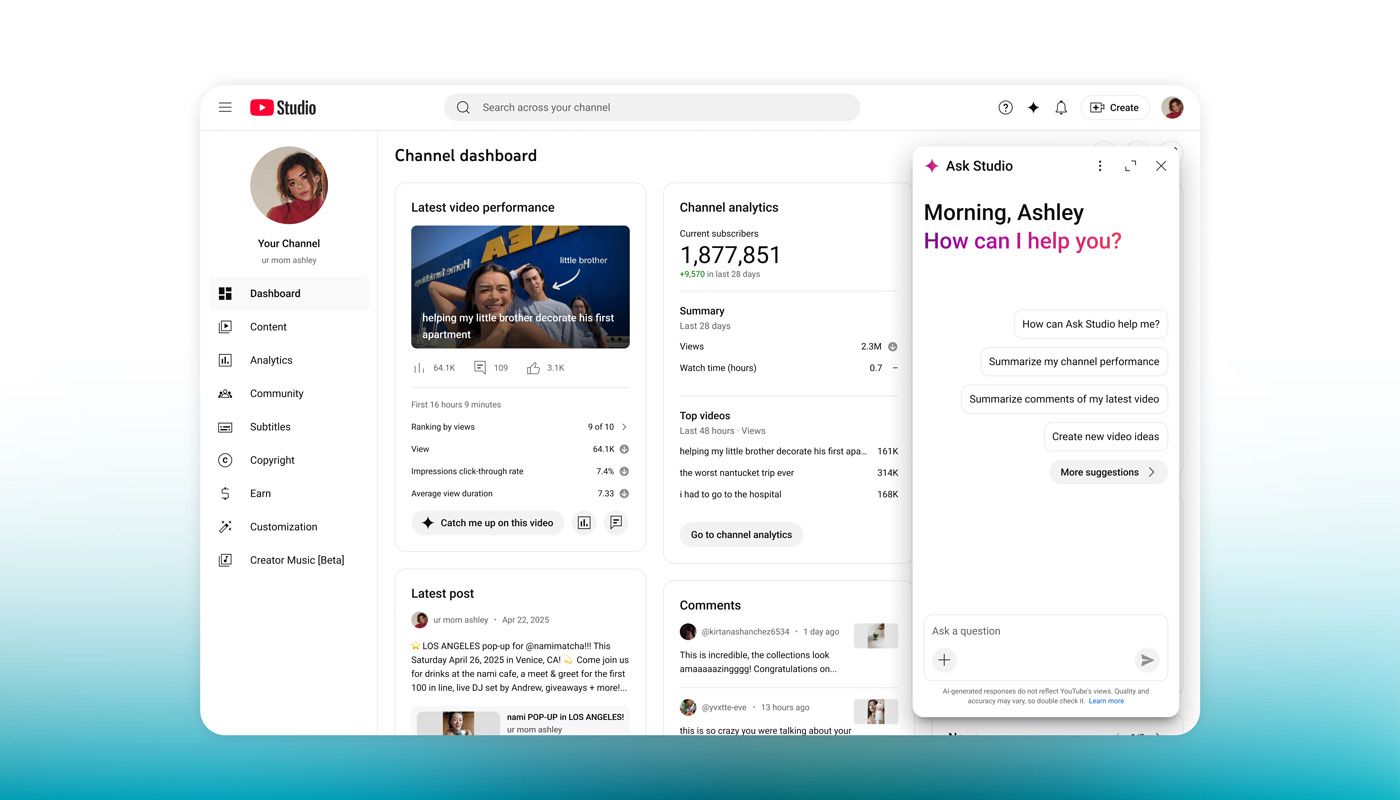YouTube just dropped a creator toolkit that could reshape how millions make content. At Tuesday's Made On YouTube event in New York, the platform unveiled Ask Studio - an AI chatbot that analyzes performance data - plus enhanced lip-synced dubbing and comprehensive A/B testing tools. These aren't just features; they're YouTube directly telling creators how to beat its own algorithm.
YouTube is handing creators the keys to its own kingdom. At Tuesday's Made On YouTube event in New York, the platform unveiled a comprehensive AI toolkit that doesn't just help creators make better content - it tells them exactly what the algorithm wants to see. The announcement marks a fundamental shift in the creator economy, where platforms themselves now provide the optimization tools that creators used to figure out through trial and error.
The star of the show is Ask Studio, an AI chatbot that YouTube VP of product management Amjad Hanif calls a "creative partner." The tool dives deep into channel analytics, pulling data from both long-form videos and Shorts to answer questions like "What are the most compelling moments of my latest video?" or "Why did viewers drop off at the three-minute mark?" Creators can ask for video ideas based on comment sentiment, get title suggestions, and receive optimization advice tailored to their specific performance data.
"No matter how good the video is, the thumbnail and title is what gets people to even see the video and see if it's good or not. It might be the most important thing, honestly," lifestyle influencer Ashley Alexander told The Verge. Alexander got early access to the tools and has already integrated the thumbnail testing features into her workflow for every video she publishes.
The platform is also rolling out enhanced thumbnail and title A/B testing that builds on features announced last year. Creators can now pair thumbnail images with titles and run systematic tests to see which combinations drive the highest watch time. The "winner" automatically becomes the default, taking the guesswork out of what used to be pure intuition.
On the viewer-facing side, YouTube's auto-dubbing feature is getting a major upgrade. The enhanced tool now syncs a creator's lip movements to match dubbed languages, creating a more natural viewing experience for international audiences. Videos using the AI dubbing will carry badges indicating the artificial translation, but creators won't be able to edit or correct mistranslations after upload.












